By Harris Andrews
On October 10, 1842, a directive from King Frederick Wilhelm IV of Prussia inaugurated a new piece of headgear to replace the bell-topped shako that the infantry had worn since the end of the Napoleonic Wars. The new design was an extraordinary confection—a tall, leather helmet topped with an ornamental spike. The new helmet, unofficially dubbed the Pickelhaube, would be worn
in some form by most of the regiments of the Prussian and later Imperial German army for the next 75 years. Eventually a spiked helmet was issued to all branches of the German army except hussars, lancers (uhlans), jagers, rifles, machine-gun and communication battalions, flying troops and the military train. With the creation of the German Empire in 1871, all of the German states eventually adopted the Prussian-style helmet with Bavaria the last to fall into line by 1886.
The helmet issued in 1842 was a massive affair of thick, black, pressed leather with a long front and back visor trimmed and ornamented in brass or silver metal. A long spike was secured to the top with a cruciform base. In 1844 units of the Prussian artillery received the helmet with a ball ornament instead of a spike. The front of all helmets bore some version of the Prussian heraldic eagle. A final addition was a pair of thick, brass, scale chinstraps with a black-and-white Prussian cockade attached to the right chinstrap screw.
Over its lifetime the spiked helmet was subject to numerous changes. The 1842 helmet’s massive construction, intended to protect the wearer from sword cuts, was found to be excessively heavy and unwieldy. In 1857 and again in 1860 the height of the helmet was successively reduced, with many of the older enlisted helmets being cut down to conform to the new pattern. In 1867 the cruciform base of the enlisted man’s spike was replaced with a disc-shaped pattern and the old, square, front visor was rounded. The rear spine was removed only to be replaced in 1871.
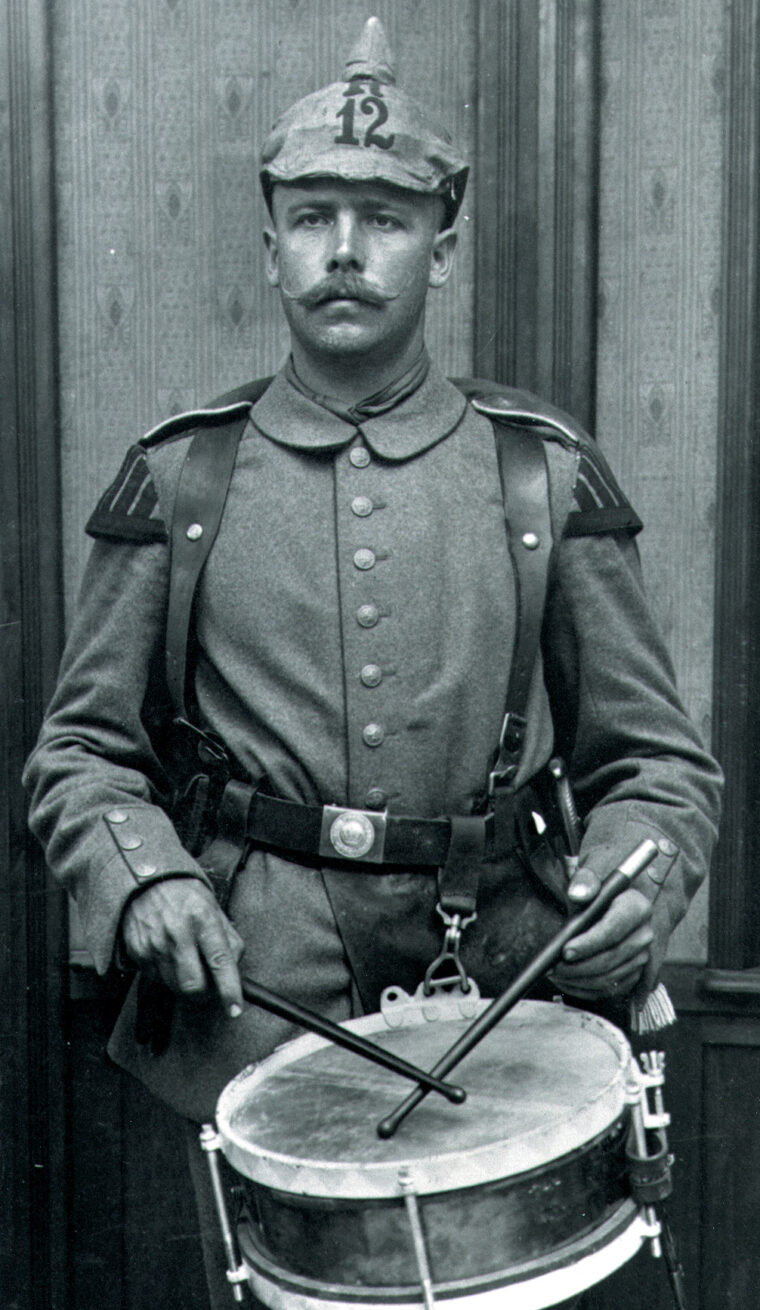
In 1887 a host of changes took place to the basic enlisted helmet. The “pearl-ring” ornament on the spike base was simplified to a rolled bead. For most line infantry regiments the old scale chinstrap was replaced by an adjustable leather strap, with a single buckle, affixed to the side of the helmet by a hook. The hook replaced the screw and brass rosette fastener used on the earlier models. Guard regiments, grenadiers and certain designated foot regiments were authorized to wear the scale chinstrap with flat scales, while mounted troops and field artillery were issued straps with convex scales. In a final simplification, the metal trim was removed from the front visor, a modification that was found to make the brim too flimsy, and the trim was replaced a few years later. A “bayonet”-type chinstrap attachment was introduced in 1891 and by 1895 the helmet reached its final peacetime configuration. The number of ventilation holes on the spike base was increased from two to five, a sliding ventilator was added to the rear spine and metal fittings were changed from brass to an aluminum bronze alloy.
During the more than 50-year period between 1842 and 1895, a bewildering variety of regulations were put forth granting special distinctions to individual regiments and branches of the infantry. Line infantry regiments retained the basic Prussian heraldic eagle with the cipher “FR” on its breast. In 1869 a bandeau was added to the line eagle bearing the motto “Mit Gott fur Koenig und Vaterland” (With God for King and Country). Guard regiments received a “guard eagle” with wings swept to the side with a white metal guard star superimposed on the breast. The guards added the “Vaterlands” bandeau in 1860. The helmet of the Guard Grenadier Regiment “Alexander und Franz” carried the guard eagle without the star.
The old royal grenadier regiments were authorized the line eagle with a central medallion featuring an entwined “FWR” cipher, and beginning in 1911 some grenadier regiments adopted a new guard-style grenadier eagle. Several regiments were granted the right to place battle honors or dates on their helmet plates. For example the 74th, 7th, 78th, 164th, and 165th Infantry Regiments were authorized the battle honor “Waterloo” in 1899. Several other regiments bore honors from the Napoleonic Wars.
Several branches of the Prussian cavalry received versions of the Pickelhaube. Cuirassier regiments were authorized a heavy iron-spiked helmet with a segmented neck guard trimmed in brass. Guard Cuirassiers and the 6th Regiment received helmets made of tombak, an alloy of copper and zinc, trimmed in German silver. On parade the Body Guard, or Garde du Corps, Cuirassier regiment substituted a spectacular silver-metal Prussian eagle for the spike. Like its infantry counterpart, the design of the Cuirassier helmet was simplified by regulations in 1860 and 1889, gaining a lower crown and shorter front visor. The 1891 chinstrap attachment allowed a leather strap to be worn on maneuvers or in the field.
Guard Cuirassier regiments wore the Prussian guard star, a round starburst device with the Prussian eagle in the center. Line Cuirassier regiments used the Prussian heraldic eagle with the 2nd Regiment adding a band bearing the battle honor “Hohenfriedberg den 4ten. Juni 1745.” In 1902 the 1st Life Guard Cuirassier Regiment was granted a special eagle with spread wings and the motto “Pro Gloria et Patria.” The Saxon Guard Cavalry Regiment adopted a version of the Prussian Cuirassier helmet bearing the Saxon arms. For parade wear it was topped with a silver rampant lion.
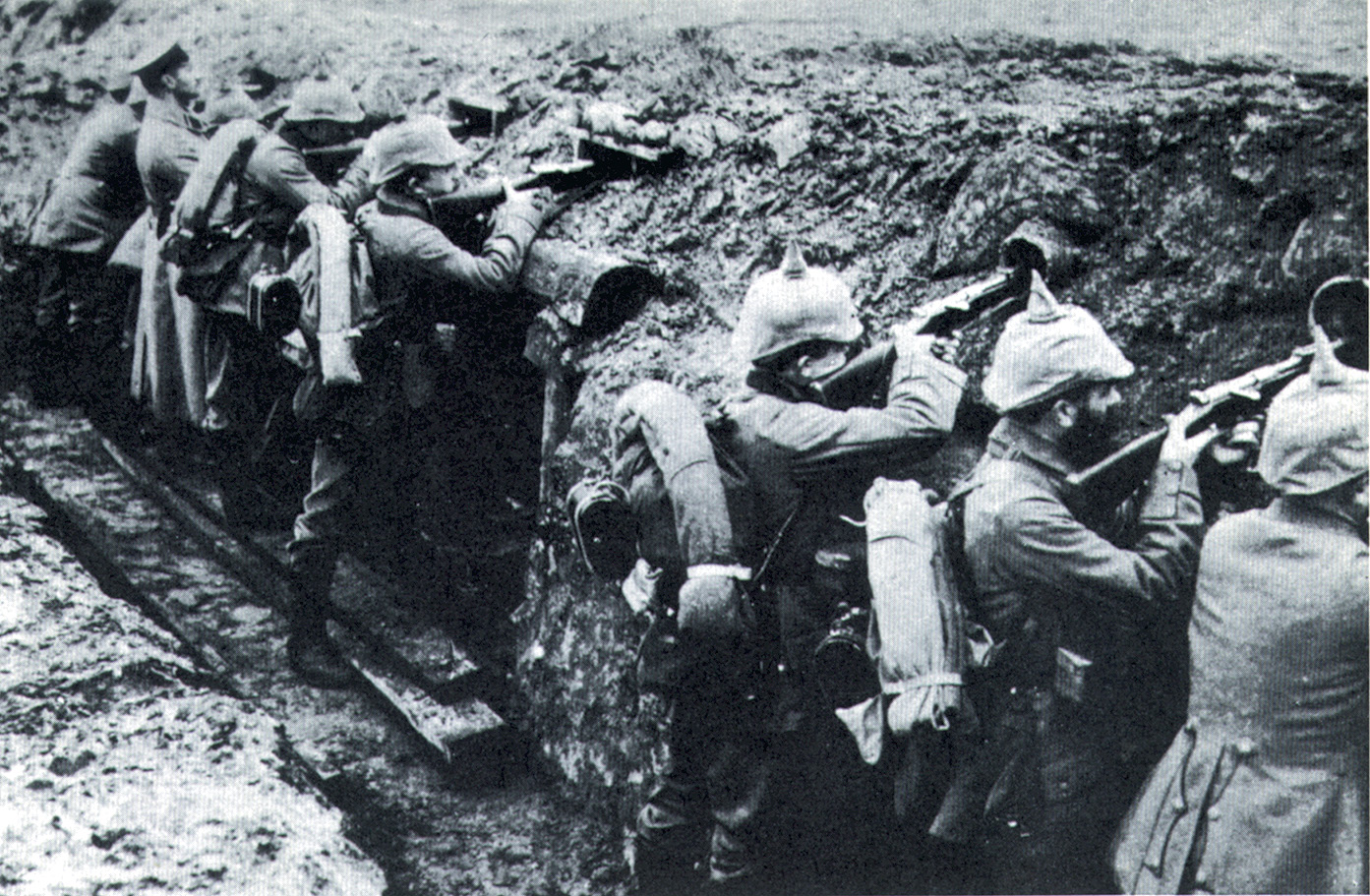
In 1860 dragoon regiments were authorized an infantry-pattern helmet with a distinctive front plate, featuring the Prussian eagle with upswept wings bearing a sword and scepter in its talons. The dragoons retained the 1860 pattern helmet up to World War I. A final version of the spiked helmet was authorized for the Jager zu Pferde (Mounted Rifle) regiments in 1897. It was a blued-steel version of the Cuirassier helmet with the dragoon eagle plate, ornamented in brass or silver.
In 1871 the new German Empire absorbed several major kingdoms including Saxony, Bavaria, Baden, Hesse and Wurtemburg. During the decades of the 1870s and ’80s, these states adopted the Prussian-style spiked helmet, adding the arms of their state in place of the Prussian eagle. Smaller principalities, such as Oldenburg, Anhalt and Saxe-Weimar, used the line eagle superimposed with their state badge. In line with their Prussian counterparts the state regiments wore their national cockade on
the right side. From March 1897 all German regiments wore an Imperial red-white-black cockade on the right side of their headgear with the state cockade on the left. Units of the reserve, or Landwehr, wore a white metal Landwehr cross on their helmet plates.
As early as 1843 regiments of the guards and other selected regiments were directed to wear a horsehair parade plume, or haarbusch, while on parade. The haarbusch was attached to a long carrier that replaced the top of the spike. Regiments authorized to wear the haarbusch received helmets with a screw-off spike top. Hair colors were white for guard, black for line and red for trumpeters and musicians.
The outbreak of World War I in 1914 heralded numerous changes in the design and construction of the German spiked helmet. As far back as 1884 a “maneuver cap,” a green cloth helmet cover, had been issued to conceal the reflective surface of the helmet. In 1897 an improved model of the cover included the regimental number in red cloth on the front. These covers were worn with the 1910 field-gray uniform during the opening years of the Great War.
With the Imperial army expanding to wartime strength, the demand for headgear increased dramatically. As early as the end of 1914, helmets made of treated and pressed gray-green felt, with standard metal fittings, began to be issued to reserve regiments. Some of these helmets were fitted with full metal trim while others were simplified to include only a spike, helmet plate and chinstrap. The felt helmets stood up poorly to field use and by 1915 German planners resumed the production of black leather helmets.
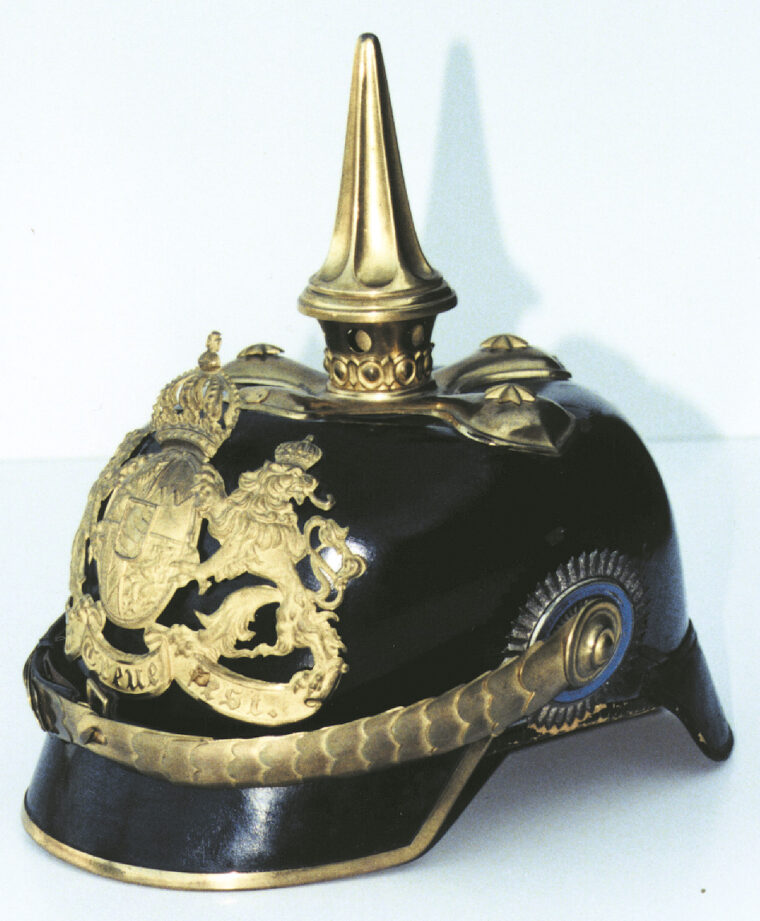
To conserve brass for the war effort the new helmets were fitted with thin, mild steel badges and fittings. The mild steel trim was painted with a gray protective coating and appropriate plates were issued for the various regiments. Heavy cavalry units were issued standard steel helmets but with gray trim. The 1915 gray helmet spike was designed with a twist-off fitting so that the spike or artillery ball could be removed from the helmet for field service. In one case the 9th Jager Battalion, serving in Galacia on the Eastern Front, was issued helmets without spikes in place of their traditional shakos. The jagers were told to wear the helmet because of the concern that their Russian opponents might mistake their shakos for the cloth caps of their Austrian allies and put up a harder fight.
During the early stages of the war, German manufacturers experimented with a wide variety of substitute, or ersatz, materials for spiked helmets. Helmets were issued in patent vulcanfiber and cardboard-like compositions. One odd variant had a leather visor and neck guard with a cloth body. Common variants, widely issued by Bavaria and Wurtemburg, were helmets made of thin, black-lacquered pressed steel.
By 1915 it became apparent that the spiked helmet offered little protection from the weapons of the modern battlefield. By the following year German units on the Western Front began to receive steel helmets and the spiked helmet faded from use. With the collapse of the German Empire in 1918, the new Weimar Republic abandoned the spiked helmet as a relic of Prussian militarism.
Today the German spiked helmet is subject to an entire field of collecting. With American participation in two world wars, thousands of helmets were brought back as souvenirs by victorious Yanks. In fact, as early as the late 19th century, importers of military surplus, like Francis Bannerman of New York, purchased obsolete patterns of helmets from the German state governments to sell as novelties and costume accessories. As a result, the collector is confronted by a bewildering variety of patterns and designs.
Anyone intending to collect Imperial German headgear should obtain the best possible research sources and conduct thorough research before purchasing a helmet. Over the years most enlisted helmets have been altered in one way or another. One means of determining the authenticity of an issue piece is to examine the markings on the interior. Many late 19th-century spiked helmets have a manufacturer’s stamp or label that sometimes includes the date. Of particular importance are the issue and regimental markings stamped in black ink on the interior shell or rear visor. A stamp “BA” followed by a Roman numeral designates the bekleidungsamt, or clothing depot. In addition a mark such as IR106 records that the helmet was issued to Infantrie Regiment 106. Bold roman numerals, followed by a date, reveal the date of issue. Collectors should be aware of the meanings of the various regimental abbreviations to judge the authenticity of a helmet. By comparing dates and regiments, and by carefully checking for extra holes and other signs of alteration, the collector can determine whether the fittings on a particular helmet have been changed.
Prices for good examples of spiked helmets have remained high over the past 30 years. A basic infantryman’s brass-mounted helmet in good condition could sell for over $200 or $300, while a guard helmet or one with a rare regimental plate might sell for up to $600 or more. Metal cavalry helmets sell for $800 to over $1,000. While not the subject of this article, officers’ helmets with finer quality leather and fittings generally sell for $700 or more. Common examples of the wartime gray mounted helmets generally sell for under $200. Earlier patterns, such as an unaltered 1842 helmet, can bring over $2,000.
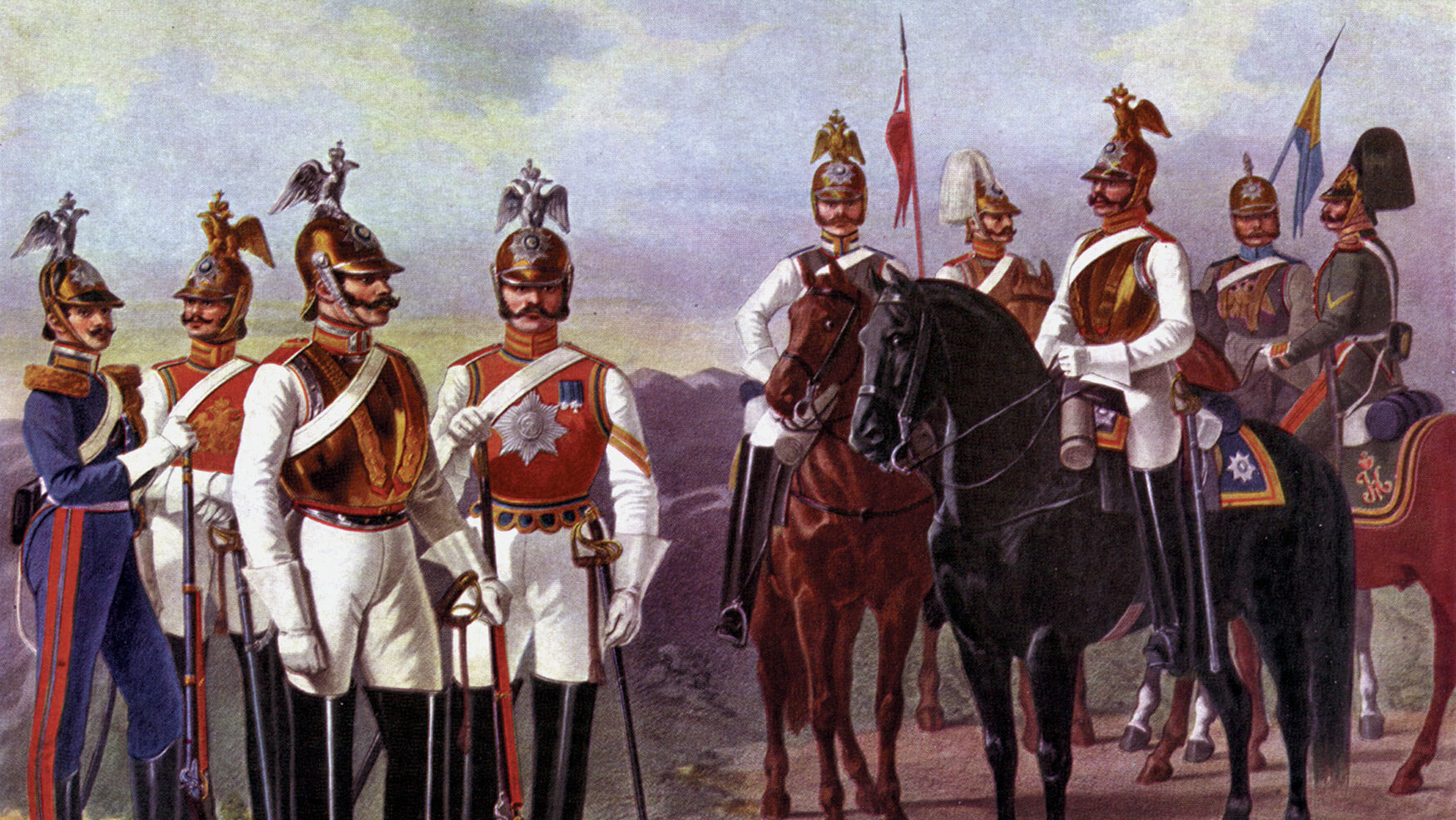
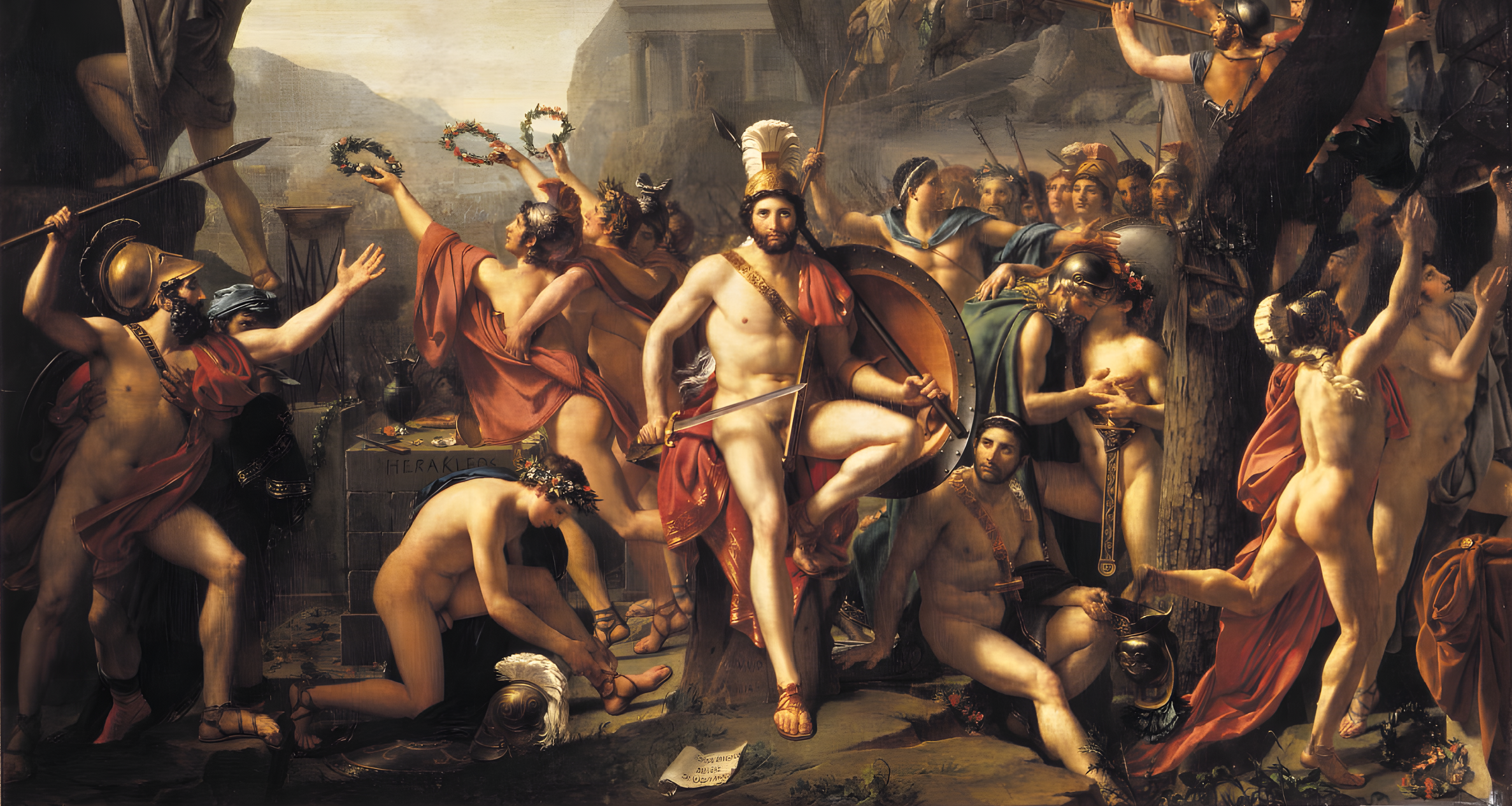
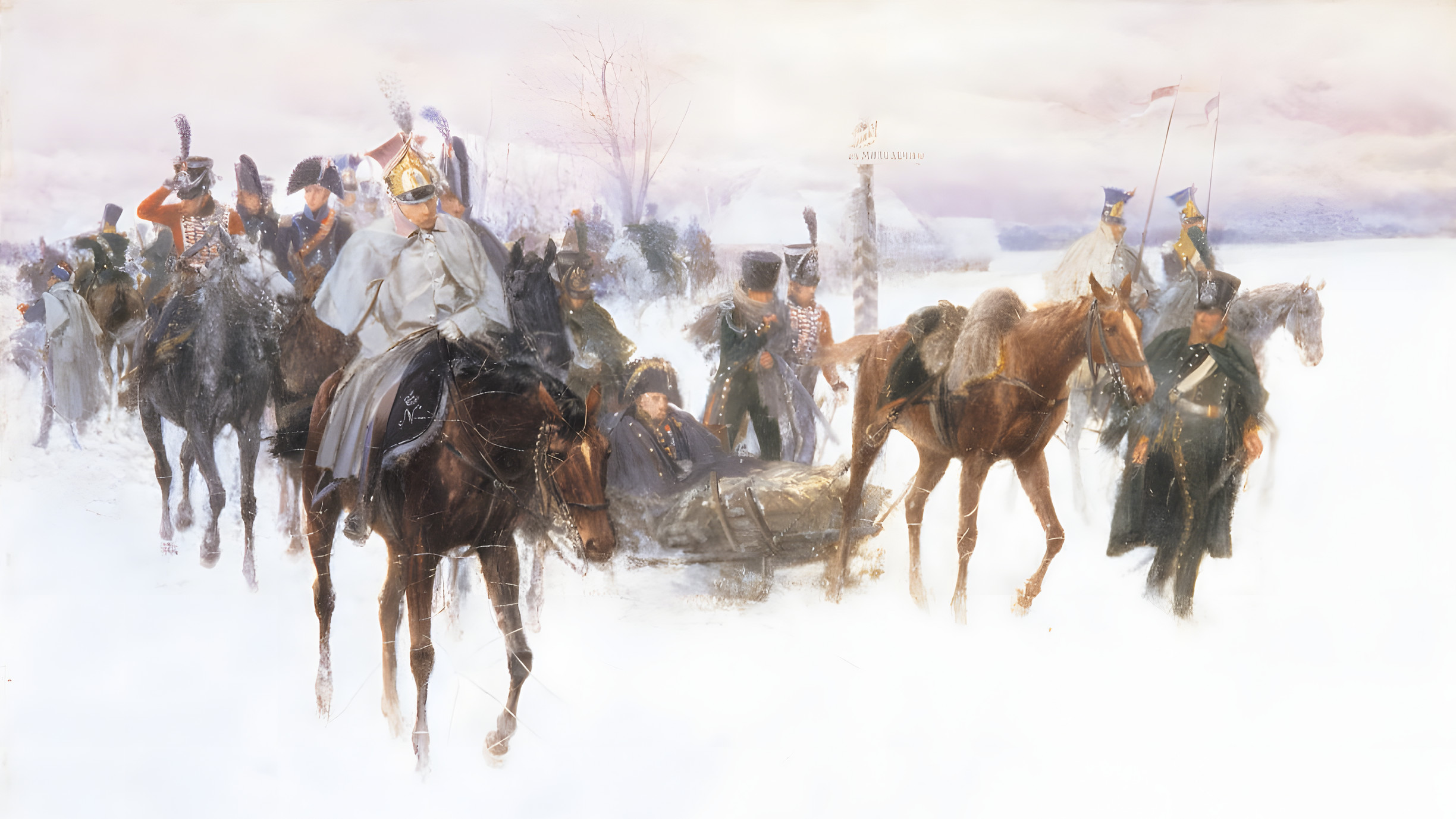
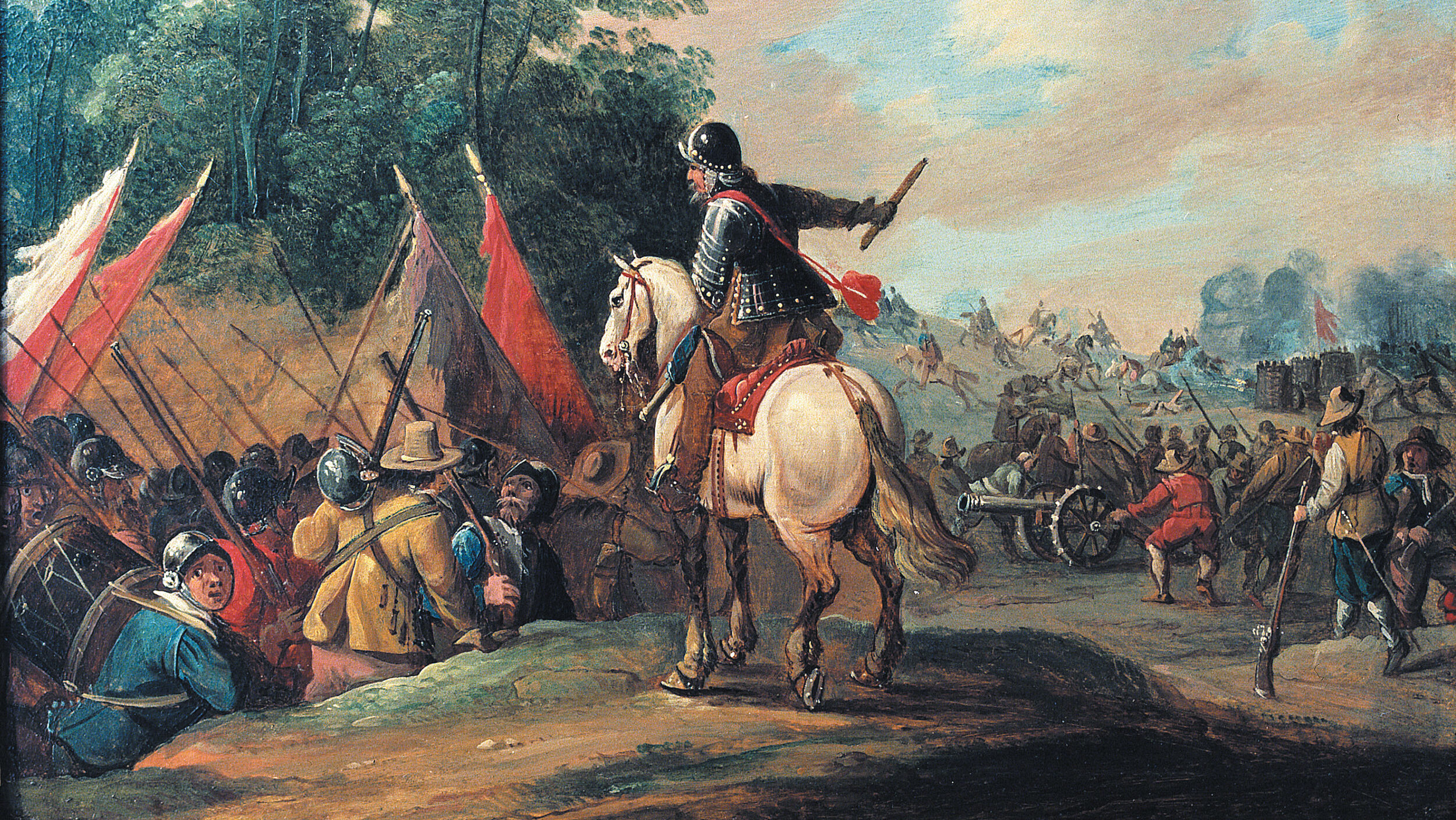
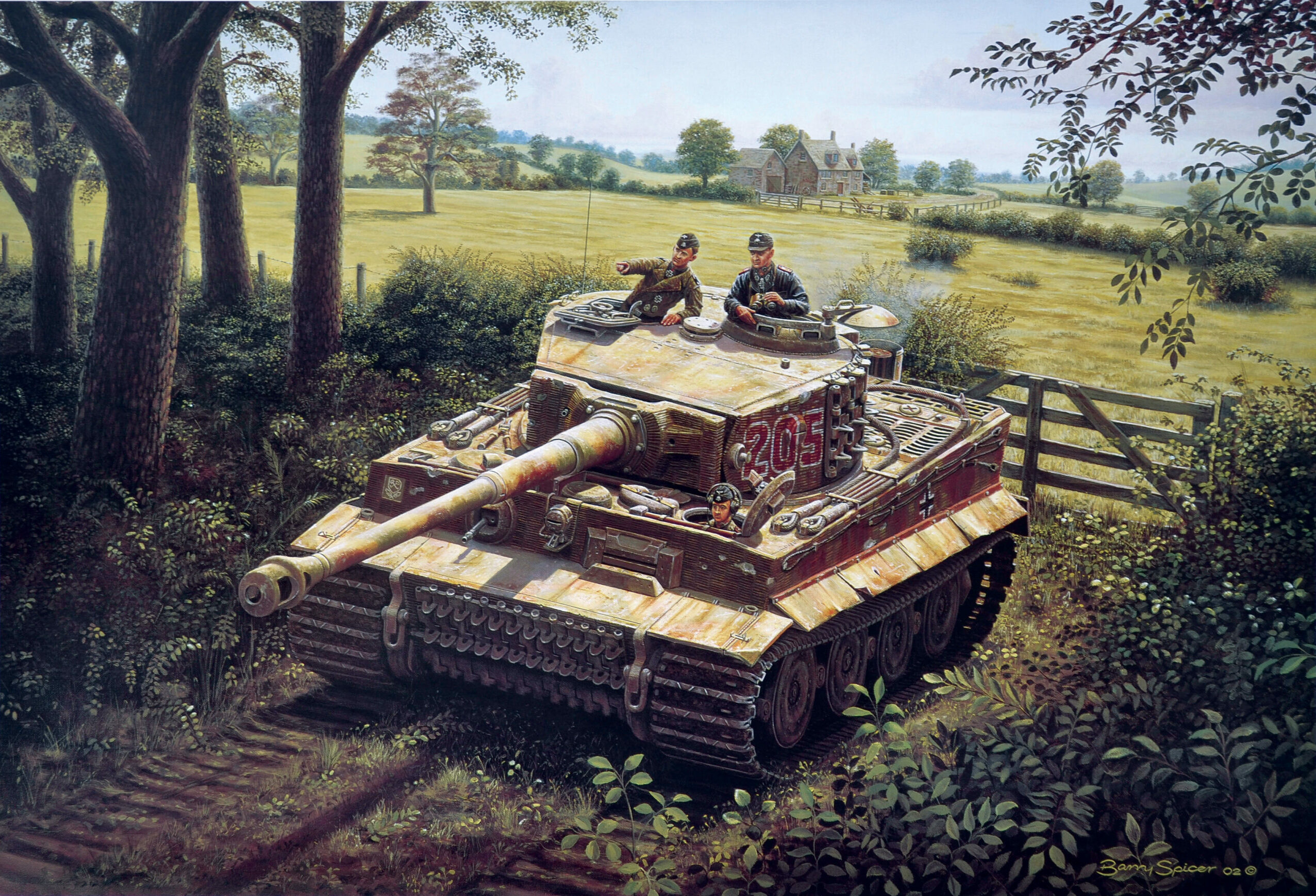
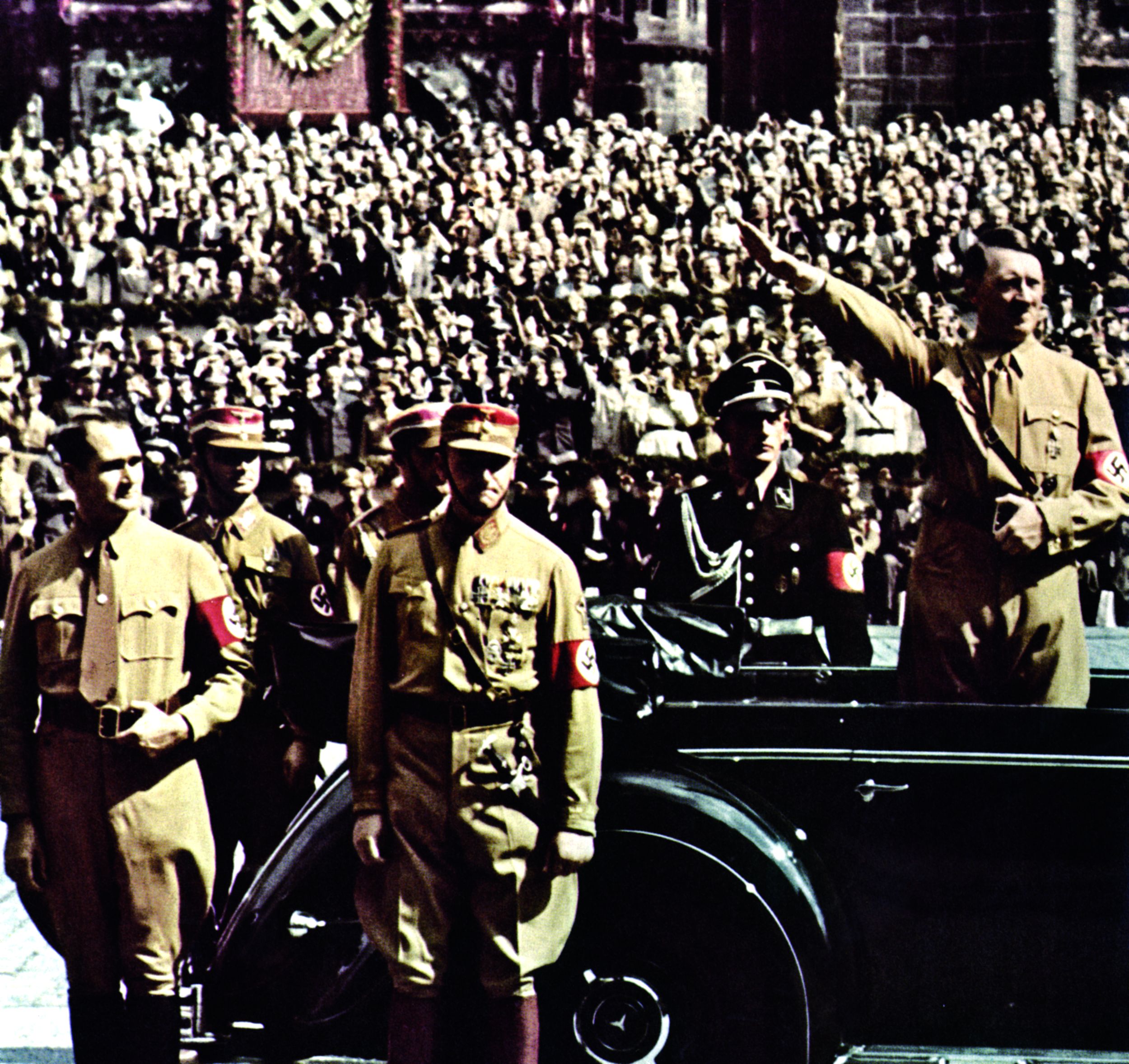
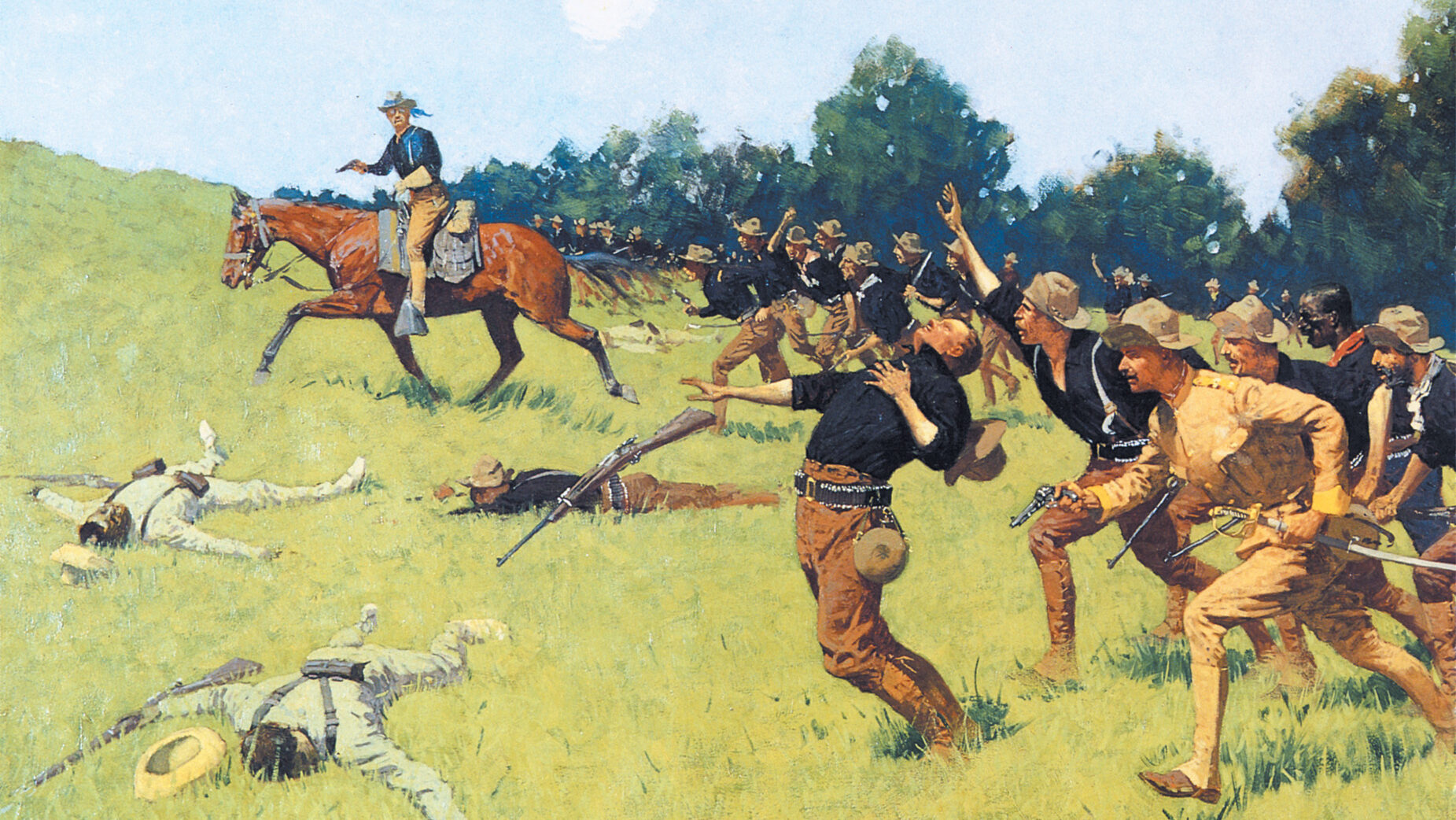
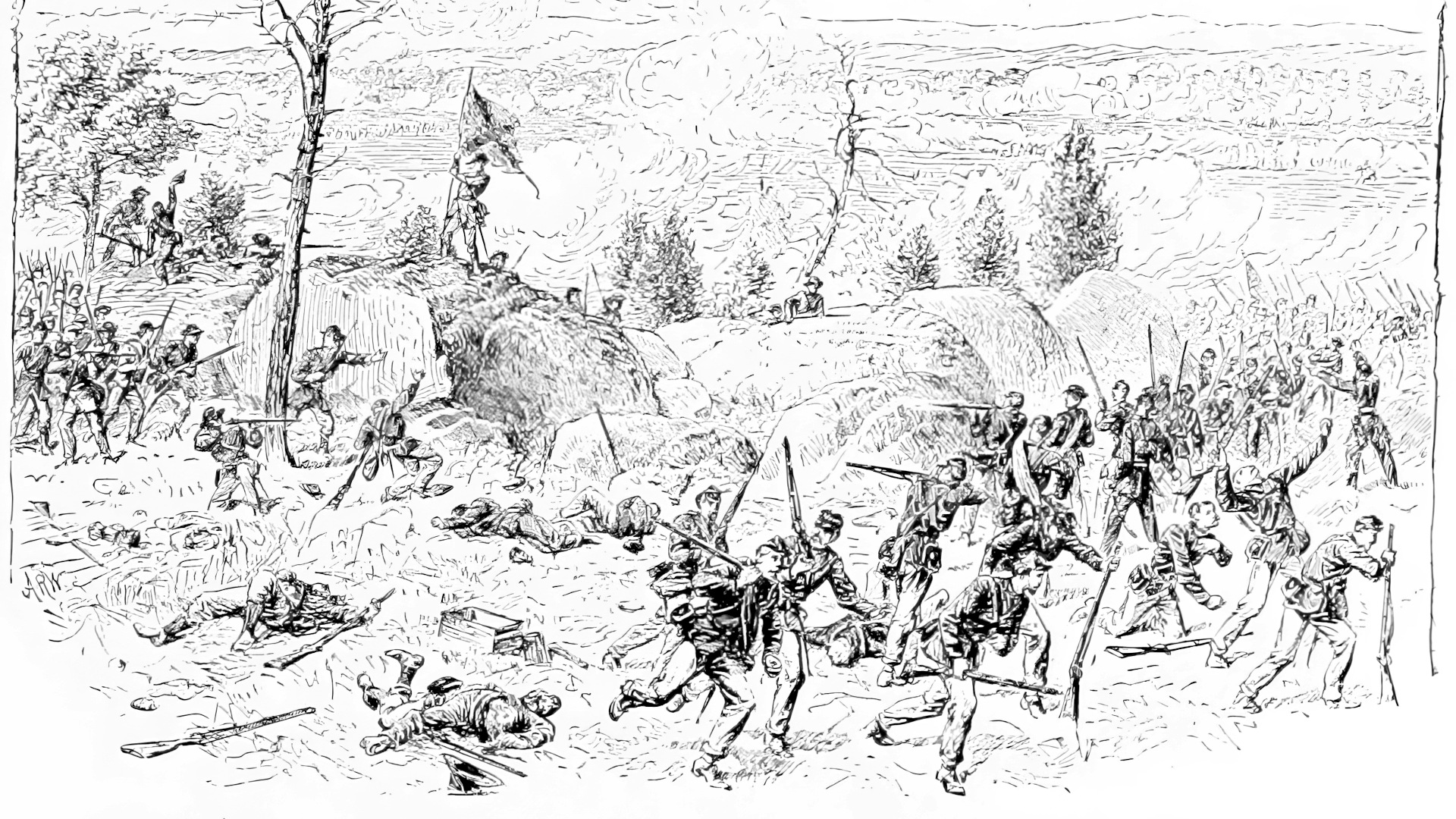
Join The Conversation
Comments
View All Comments